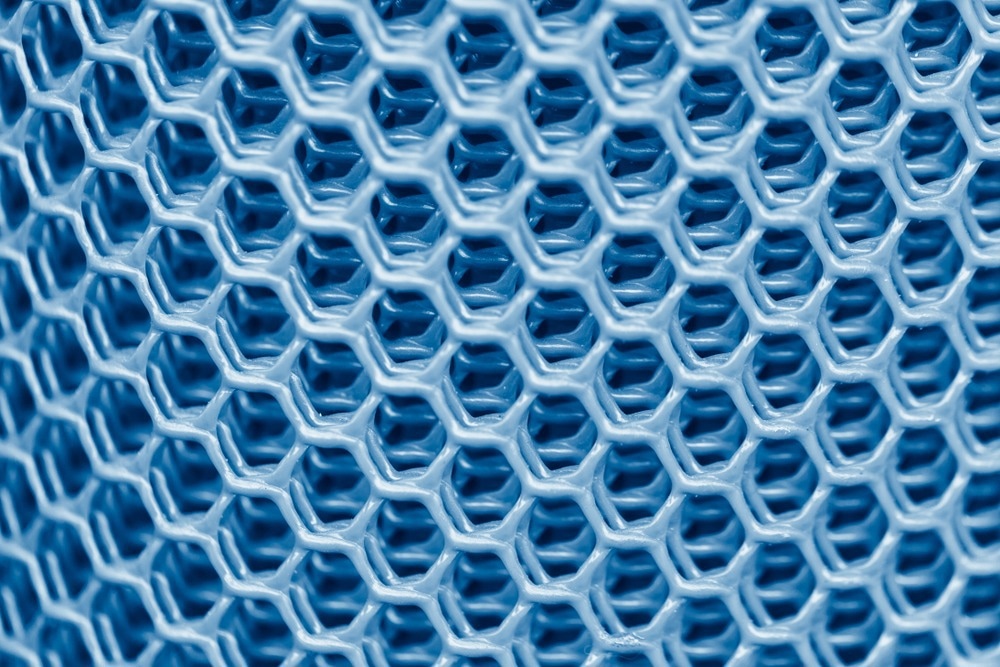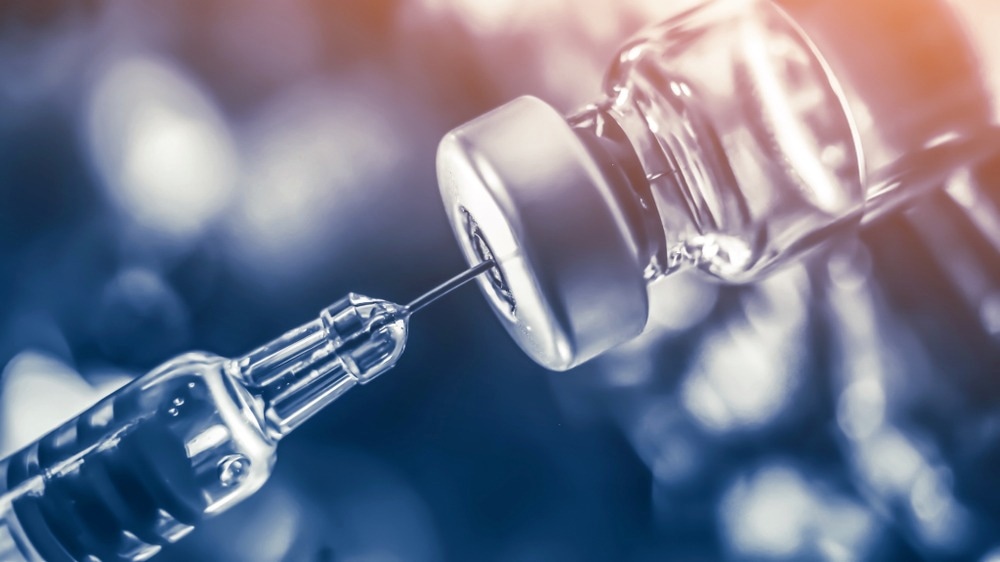Sponsored Content by PittconReviewed by Danielle Ellis, B.Sc.Apr 27 2023
In this interview conducted at Pittcon 2023 in Philadelphia, Pennsylvania, we spoke to Dr. Chad Mirkin, Director of the International Institute for Nanotechnology, about his work within the field of nanomaterials.
Please could you introduce yourself and tell me a little about your research activities?
My name is Chad Mirkin, and I am a Professor of Chemistry and the Director of the International Institute for Nanotechnology at Northwestern University. I have been there for over 30 years, focusing on the development of nanomaterials and devices that can advance analytical capabilities ranging from molecular diagnostic tools to ways of manipulating gene expression and ultimately developing new therapeutic modalities.
How did you first get involved with the International Institute for Nanotechnology?
We started the International Institute for Nanotechnology about 25 years ago. At the time, it was the first institute of its kind. We seized an opportunity as this field was really taking off, and we began to build an incredible epicenter for this type of research that drew people from all over the world, including fantastic faculty, postdocs, and students that all contribute to the development of these nanotechnology-enabled tools.
The Nanotech Breakthroughs Paving the Future of Healthcare
What are the main challenges limiting the development of next-generation diagnostic and therapeutic tools?
There are many challenges. It depends on whether we are talking about diagnostics or therapeutics. On the diagnostic front, it is what you can detect, how little you can detect, and where you can detect it. Nanotechnology plays a crucial role in this aspect as nanostructures allow for the creation of multifunctional materials that are capable of navigating various environments, binding to targets in highly specific ways, and signaling uniquely. These properties translate into innovative diagnostic capabilities. Nanoscience and technology can be applied to in vitro, intracellular, or even in vivo diagnostics. On the therapeutic front, it is all about how you get drug modalities to the point or to the area where they are needed. That often involves navigating a really complex milieu of tissues and cells and compartments within cells. The multi-functionality of nanostructures allows you to do that in unique ways.

Image Credit: Maltsev Semion/Shutterstock.com
What are some of the common areas in the medical field where nanomaterials are currently being utilized?
Diagnostic tools are used everywhere that are based on nanotechnology. An example is the Verigene system, which was developed by Nanosphere, a company we started about 20 years ago. The company that first commercialized the Verigene system was bought by Luminex, which DiaSorin then bought. That tool is used in over half the world's top hospitals to track disease-associated genetic markers.
There are constructs called nano-flares that have been used all over the world to measure intracellular RNA content. Now a whole series of tools are being developed, which will become commercial tools that allow you to improve on those capabilities, but also go into uncharted areas, including in vivo imaging.
Are there any nanomaterials that have been particularly prominent in this field, and why is that?
An example of a prominent material is something called a spherical nucleic acid, which we invented 25 years ago. These are constructs that are made by taking little snippets of DNA or RNA and chemically functionalizing them so that they can be put on the surfaces of spherical particles - tiny nanoparticles. In high density, the DNA or RNA strands are forced to stand upright and adopt the shape of the particle core, hence the term spherical nucleic acid. These constructs are the basis for commercial probes used in the Verigene system, for example.

Image Credit: Quality Stock Arts/Shutterstock.com
They are also the basis for nano-flare technology. They are the basis for fit-flare technology and the basis for many new drug modalities that allow you to control gene expression in unique ways and to create new vaccines. They can become the adjuvants of vaccines, and when modified with peptides, they can be used to train your immune system to selectively eradicate either infectious diseases, like COVID, or different forms of cancer. They are also the basis for new types of CRISPR gene editing capabilities. Unlike normal DNA and RNA, spherical nucleic acids can enter cells and tissues quite freely.
If you take Cas9, the protein involved in CRISPR, or any of the Cas proteins, and modify it with DNA and load it up with the CRISPR components, you can now get it into cells and tissues you normally could not get it into. You can affect gene editing in novel and powerful ways.
What roles do toxicological analysis play in enabling nano-based healthcare devices?
Toxicity is always a key concern of anything that will be used in vivo. But even for things used in vitro, you want to know the basic toxicity of different components. Knowing where and how to use these constructs safely is a big part of any exercise, such as developing either probes or therapeutic tools.
How important is a multi-disciplinary approach to workflows that hope to integrate nanotechnologies into the design of a new diagnostic or therapeutic system?
Nanotechnology is the ultimate interdisciplinary field in the sense that it is really about redefining all of science and engineering and aspects of medicine. When you take a material and shrink it down in size or molecular components and assemble them up to the nano scale, those constructs all have new properties that are very different from the bulk.
There is a lot of scientific discovery there – understanding the structure-function, relationships - and applications. How do I use those properties to develop new tools that can drive biology, that can drive medicine, that can drive clean energy, that can drive optics or electronics? Depending on what we are using those materials for, we draw upon different disciplines to tackle those problems, often in a very team-oriented way. It is rare to see somebody really excel in this field that does not either have a broad skillset or surround themselves with lots of folks from different fields.
Are there any particular nanotechnologies helping to target devastating diseases like cancer?
There are many nanotechnologies. It is one of the most exciting areas of advancement. We just went through COVID, and the vaccines developed to protect against COVID were undeniably a revolution in medicine. These vaccines, lipid particles that encase mRNA, can allow you to effectively trick or teach your cells how to produce antigens that elicit a specific immune response. They are examples of how nanostructures or microstructures, in this particular case, can play a big role in terms of driving the development of medicine.
It gets even better as you begin to build tinier structures and control the presentation of the components so that you can develop powerful new forms of immunotherapy that fight cancer in unique ways, for example, being able to not only regulate how these components get into cells, but also how they are processed within those cells so that you can maximize the efficiency of a particular type of drug or, in this case, a vaccine.
What are you working on right now that you are particularly excited about?
The concept behind rational vaccinology is that structure matters. If you think of pharmaceutical development over the last five decades, it has focused heavily on the case of small molecules and biologics on the structure. Sometimes a single atom can change the efficacy of a drug.
With vaccines, we do not do that. It is amazing. We take two components, an adjuvant and antigen, mix them together, inject, and hope for an appropriate immune response. Rational vaccinology says that if I take those components in a nanostructure and present them in different ways, I can get different effects and move along from ineffective to curative access in a significant way.
With many different animal models, we have shown that rational vaccinology is real and that if you take a series of components designed to create a vaccine and structure them appropriately, you can significantly maximize their efficacy.
 Image Credit: Numstocker/Shutterstock.com
Image Credit: Numstocker/Shutterstock.com
With vaccines, we do not do that. It is amazing. We take two components, an adjuvant and antigen, mix them together, inject, and hope for an appropriate immune response. Rational vaccinology says that if I take those components in a nanostructure and present them in different ways, I can get different effects and move along the ineffective to curative access in a significant way.
With many different animal models, we have shown that rational vaccinology is real and that if you take a series of components designed to create a vaccine and structure them appropriately, you can significantly maximize their efficacy.
What are you most excited about for Pittcon 2024 next year in San Diego?
I love seeing all the new tools and capabilities that come online. Tools drive my field. They drive almost all fields. Analytical tools are really the backbone of everything that we do. New capabilities lead to new advances. New advances lead to new opportunities.
The COVID-19 pandemic has impacted exhibitions such as Pittcon. How important is it for speakers and exhibitors to come together face-to-face at events like this?
Face-to-face events like Pittcon are critical. So much was lost over the years of COVID, not just in terms of lab productivity but in terms of personal contact and exchange of information. Science thrives when there is a lot of interaction between scientists. That interaction is a lot better face-to-face than via Zoom or other remote-type capabilities.
About Dr. Chad Mirkin
Chad A. Mirkin, PhD is the Director of the International Institute for Nanotechnology and the Rathmann Professor of Chemistry, Materials Science and Engineering, Chemical and Biological Engineering, Biomedical Engineering, and Medicine at Northwestern University.  He is a chemist and nanoscience expert, known for his invention of spherical nucleic acids, dip-pen nanolithography and related cantilever-free nanopatterning and materials discovery methodologies, and high-area rapid printing as well as contributions to nanoparticle synthesis and supramolecular chemistry. He has authored >850 papers and >1,200 patents worldwide (>400 issued) and founded over 10 companies. Mirkin has been recognized with >250 awards. He served for eight years on the President’s Council of Advisors on Science & Technology and is one of very few scientists to be elected to all three US National Academies as well as the American Academy of Arts and Sciences. Mirkin has served on the Editorial Advisory Boards of over 30 scholarly journals, is the founding editor of the journal Small, was an Associate Editor of J. Am. Chem. Soc., and is a Proc. Natl. Acad. Sci. USA Editorial Board Member.
He is a chemist and nanoscience expert, known for his invention of spherical nucleic acids, dip-pen nanolithography and related cantilever-free nanopatterning and materials discovery methodologies, and high-area rapid printing as well as contributions to nanoparticle synthesis and supramolecular chemistry. He has authored >850 papers and >1,200 patents worldwide (>400 issued) and founded over 10 companies. Mirkin has been recognized with >250 awards. He served for eight years on the President’s Council of Advisors on Science & Technology and is one of very few scientists to be elected to all three US National Academies as well as the American Academy of Arts and Sciences. Mirkin has served on the Editorial Advisory Boards of over 30 scholarly journals, is the founding editor of the journal Small, was an Associate Editor of J. Am. Chem. Soc., and is a Proc. Natl. Acad. Sci. USA Editorial Board Member.
About Pittcon
Pittcon® is a registered trademark of The Pittsburgh Conference on Analytical Chemistry and Applied Spectroscopy, a Pennsylvania non-profit organization. Co-sponsored by the Spectroscopy Society of Pittsburgh and the Society for Analytical Chemists of Pittsburgh, Pittcon is the premier annual conference and exposition on laboratory science.
Proceeds from Pittcon fund science education and outreach at all levels, kindergarten through adult. Pittcon donates more than a million dollars a year to provide financial and administrative support for various science outreach activities including science equipment grants, research grants, scholarships and internships for students, awards to teachers and professors, and grants to public science centers, libraries and museums.

Visit pittcon.org for more information.
Sponsored Content Policy: News-Medical.net publishes articles and related content that may be derived from sources where we have existing commercial relationships, provided such content adds value to the core editorial ethos of News-Medical.Net which is to educate and inform site visitors interested in medical research, science, medical devices and treatments.